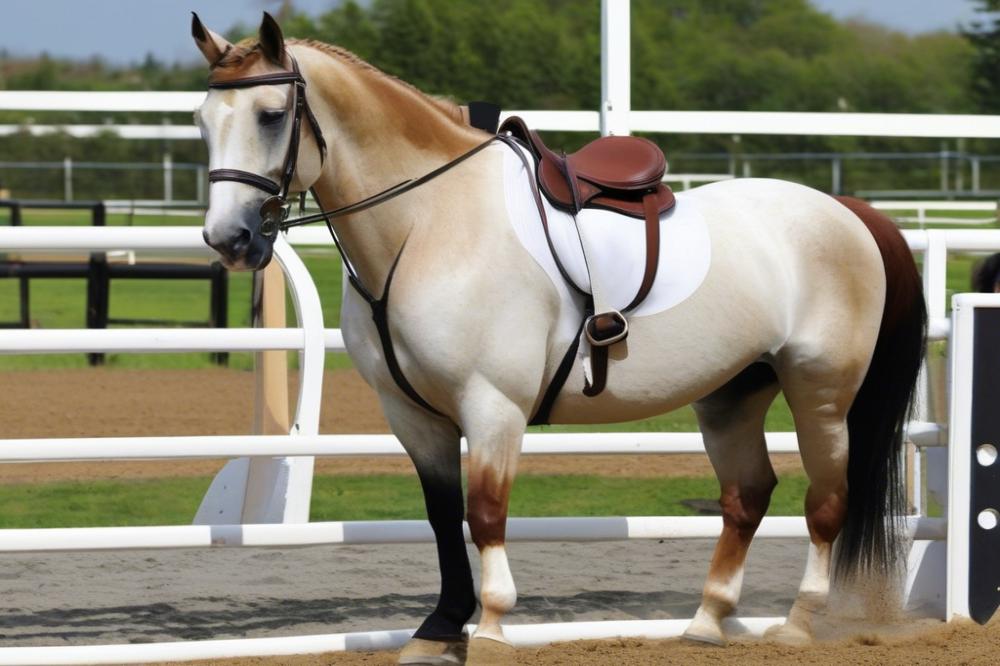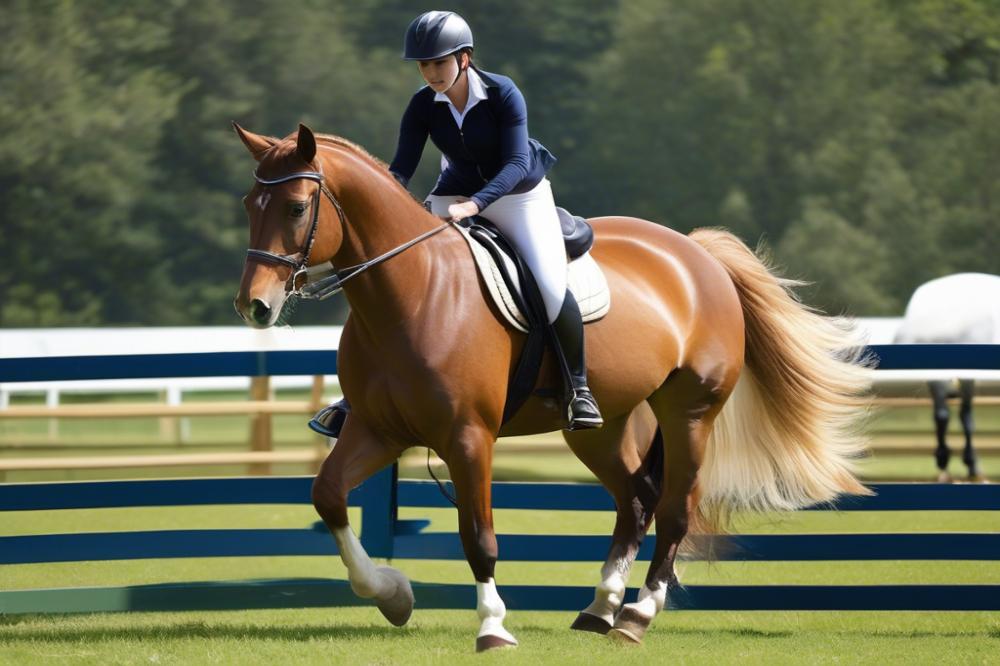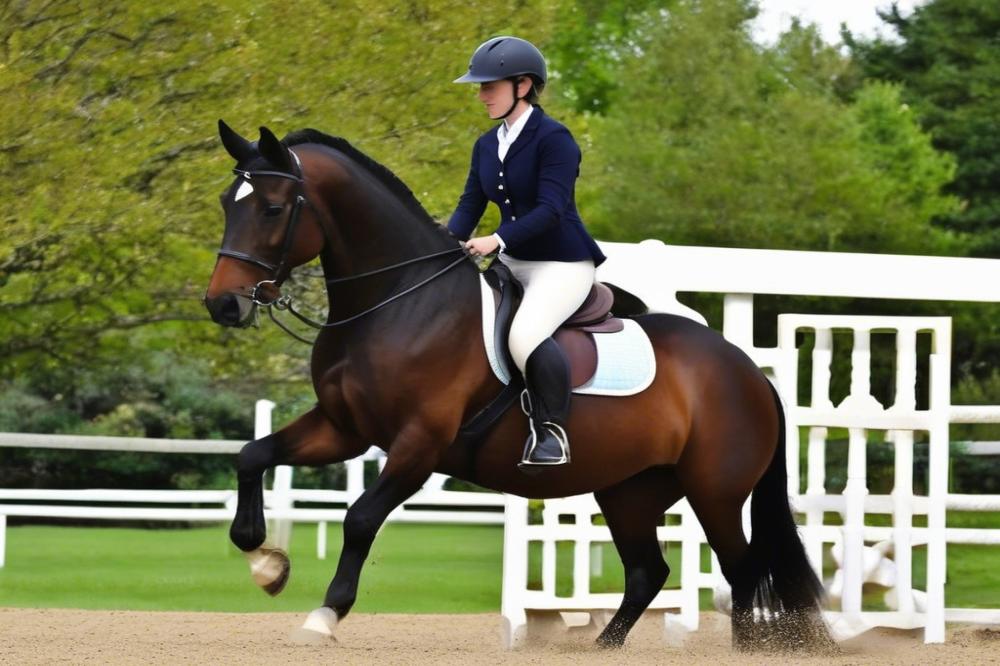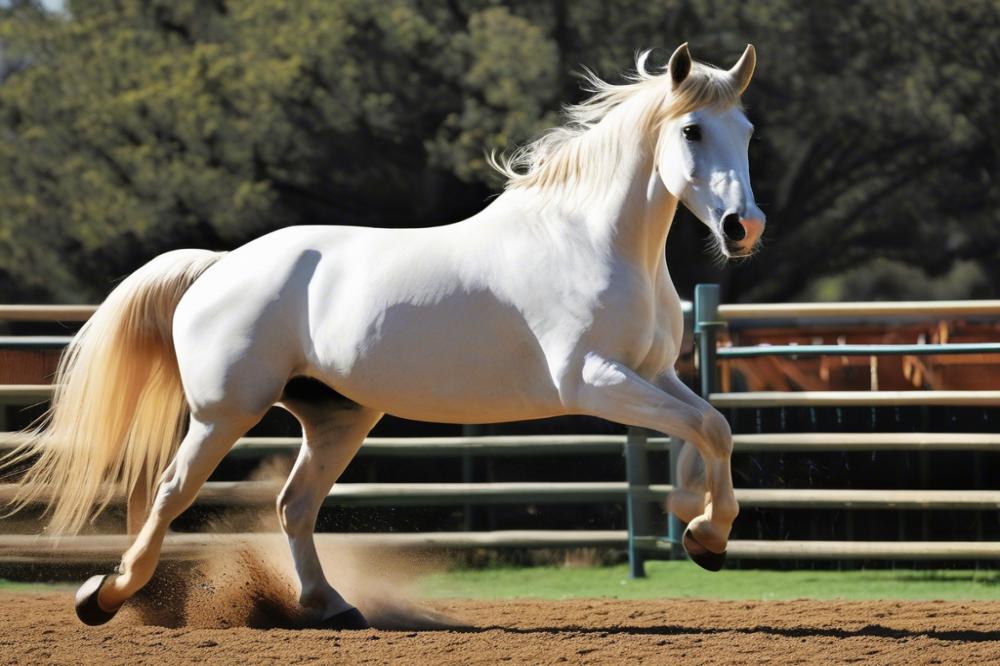Understanding the Art of Dismounting
Dismounting from a horse is something that might not seem very complex at first glance. However, taking your time to do it correctly is vital, both for the safety of the rider and the horse. Just think about it: when you jump off a horse without a plan, it’s like trying to leap off a moving train! You might think you’re some sort of superhero, but the reality can be a bit more, well, dramatic.
Proper technique plays a crucial role in horse riding. The last thing you want is to hurt yourself or surprise your horse when getting down. Horses are sensitive creatures, and a sudden thud right after a joyful ride can lead to unexpected reactions. As a rider, you are responsible for horse care, and that includes ensuring your partner stays calm even when it’s time to part ways. Trust me, a well-executed dismount will keep your horse happy and you safe.
Safety First
Speaking of safety, let’s chat about how important it is for both rider and horse to feel secure while dismounting. Imagine this: You’ve just finished a thrilling ride, and you decide to hop off like a kangaroo. Much to your surprise, you land awkwardly. Not only could you hurt your ankle, but that might spook your horse, too! Understanding horse riding techniques can really help you avoid these blunders. Riding should be an enjoyable and safe experience, not a trip to the emergency room!
Moreover, every horse is different. Some are as calm as a content kitten, while others might be a little more reactive. It’s worth noting that inquiries like “are hancock horses dangerous?” pop up because the horse’s temperament can vary greatly. A less experienced rider might not realize that their actions can have significant impacts on their equestrian adventure. Keep in mind that proper training and dismounting techniques can make a world of difference.
Lastly, when engaging in one of the biggest horse racing events in the USA, knowing how to dismount correctly becomes even more critical. With all the excitement around racing, a hasty exit might ruin the experience. Take your time, breathe, and remember: it’s not just about riding; it’s about the journey you share with your horse. After all, riding is a dance, and every dance has a beginning, middle, and end—even if that end is a smooth dismount!
Understanding the Basics of Dismounting

Definition of Dismounting from a Horse
Dismounting is simply the act of getting off a horse. It might seem straightforward at first glance, but it actually requires some thought. Riders need to consider balance and safety when leaving the saddle. Remember, it’s not just about hopping down. There’s an art to it, much like dodging that one pesky horse fly!
Why Proper Technique is Essential
Using the correct technique when you dismount can make a big difference. For starters, safety is always a priority in equestrian activities. Think of it as a dance. If you know your steps, you’ll avoid tripping over your own feet. A well-planned dismount also helps maintain the horse’s calmness. Nobody wants their four-legged friend to feel jarred or confused. Good horse riding techniques include keeping your horse steady as you prepare to step off.
Many riders underestimate the importance of using proper dismounting techniques. Skipping this step can lead to accidents. Imagine swinging your legs off without thinking—yikes! Not only could you get hurt, but that sudden movement could startle the horse too. Practicing equestrian skills ensures that you have confidence with every step.
Developing the right habits while riding also means having safe landings. Horse care involves understanding how a horse reacts to different movements. Dismounting with thoughtfulness is part of that care. Always remember to check your surroundings before jumping to the ground. Is there a rock? Or maybe a curious friend who might trip you?
Following these tips can make all the difference. With a little practice, you’ll dismount like a pro in no time. Riding horses should be fun, and having skills helps make it enjoyable. So, let’s dive into those steps you can take for a smooth and safe exit!
Preparing to Dismount

How to Assess the Environment Before Dismounting
Before you hop off, take a look around. Notice what’s happening nearby. Are there other horses? Maybe some folks walking around? Being aware of your surroundings is a key part of your equestrian skills. You don’t want to surprise an unsuspecting horse or bump into a person. A safe area can make a world of difference. Look for soft ground or a flat space. Steep hills or rough terrain can turn an ordinary dismount into a slip-and-fall episode, and nobody wants that.
Checking Your Horse’s Behavior and Stability
Now, shift your focus to your horse. How does he or she seem? Is your mount relaxed or fidgety? A calm horse will make your dismount smoother, while a jumpy one might make you feel like you’re on a roller coaster. Feel the muscles beneath you—are they tense? Paying attention to your horse’s body language is crucial. Nervous behavior can signal it’s time to wait just a minute longer. Take a deep breath and chat softly to your horse. Sometimes, your voice can work wonders when it comes to soothing an anxious companion.
Gathering Essential Gear and Ensuring Safety
Next, let’s talk gear. You might have a few essentials that help you stay safe while riding. Always make sure to wear your helmet, even if you have a strong urge to feel the wind in your hair. Safety should always come first. Secure your reins, too. They shouldn’t be dragging as you prepare to dismount. It’s helpful to have things like gloves and a sturdy saddle pad handy in case you need extra support. These little horse riding tips add up when it comes to smooth transitions. A tugged saddle strap can also be a handy safety check. A well-maintained saddle means a better ride and a safer dismount. Always put caution at the forefront of your mind!
Step-by-Step Guide to Dismounting

Positioning Yourself Correctly in the Saddle
When sitting in the saddle, your body should feel balanced. Keep your back straight and your shoulders relaxed. This helps develop good equestrian skills and makes dismounting easier. You’ll want to sit up tall, but not too stiff. Imagine you’re a puppet, keeping things loose. This way, when the time comes to leave your trusty steed, you’re not thrown off-balance right from the start.
Next, shift your weight slightly into your stirrups. This allows you to keep a solid grip on the horse. Remember, comfort goes hand-in-hand with safety. That’s something horse riding techniques stress. If you’re uneasy, it might be wise to practice in a safe area first.
Using the Reins and Stirrups Effectively
Holding the reins correctly makes all the difference. Slide your hands down to create a little slack before dismounting. You want your horse calm and relaxed while you get ready to hop down. Pulling too tightly on the reins can quickly switch their mood from mellow to jumpy.
As for your feet, make sure they are positioned well in the stirrups. In fact, keeping your toes pointed slightly down helps avoid any awkward slips. This tip relates to horse care too. Always check your tack and stirrups before mounting, so everything feels right when you dismount.
The Actual Dismounting Technique
When it’s time to dismount, swing your right leg over the back of the horse. This might feel a bit daunting, but stay calm. With your right foot coming clear of the saddle, you can feel the ground calling. Try to step down gently into a good stride as you hit the ground. Remember to jump down onto your feet, not your knees!
A confident dismount makes a great impression. Even if you feel nervous, your horse picks up on body language. If you act like you own the place, they’ll follow suit.
Common Mistakes to Avoid
One big error people make is forgetting to check their footing. Landing in an awkward position can lead to a tumble. Always look down before you land. Choosing a safe spot to dismount is vital.
Another common mishap is gripping the saddle too tightly with your legs. It’s natural to hang on. However, releasing those muscles before you hop down allows for a smoother dismount.
Don’t rush the process. Some riders are eager to jump off and head out, but patience is key here. Dismounting too quickly can lead to slips and falls, which are best avoided in horse training.
Ever see someone land flat on their back? It’s both funny and cringeworthy at the same time. Avoid being that person! Follow these tips, and you’ll impress anyone watching your stacked equestrian skills.
Special Dismounting Techniques
Dismounting a horse might seem simple, but it’s an art in itself. Different situations call for different techniques. Whether you’re a beginner or seasoned rider, understanding these methods can help you do it safely and gracefully.
Methods for Dismounting in Various Situations
Riding in an arena or on the trails often changes your approach. When you’re in a safe area, such as a riding ring, you can take your time. Lean slightly forward, swing your leg over, and gently land on the ground. This method shows off your equestrian skills!
If you’re on a narrow trail, consider your surroundings. There could be bushes or rocks. In this case, check your balance. You might want to dismount facing the horse. It provides more control. Hold the reins in one hand and slowly swing your leg. Be cautious. You don’t want to end up in a tangled mess.
Dismounting from Different Types of Horses
Every horse has its own personality and size. Imagine a towering draft horse compared to a nimble pony. For tall horses, adjust your dismount strategy. Position yourself closer to the saddle. Use a small step down to reduce the drop. Finding your balance is key.
Ponies, while shorter, may have their quirks too. They often like to trot off as soon as your feet hit the ground. Stay alert! You can slide down while holding onto the saddle to keep them steady. This horse riding technique will save you from a surprise gallop.
Dismounting While on a Trail or in a Show
When on a trail ride, always keep your surroundings in mind. If you come to a stop near a steep incline, dismounting can become tricky. Turn your horse such that you’re facing downhill. Swing your leg over gently and step down. It sounds easy, but maintaining equestrian safety here is vital.
In a show, things differ a bit. You want to leave an impression. Grace matters. Dismount with poise. First, come to a complete stop. Thank your horse with a little pat. Then, swing your leg off, but make it look smooth. Remember, this is part of horse training! Show off those skills!
Don’t forget to keep one hand on the saddle as you come down. This will help you balance yourself. Falling off isn’t a part of the plan. Engage with your horse; they appreciate your attention. It strengthens your bond and shows proper horse care.
Common Issues and Troubleshooting
What to do if you feel unsafe dismounting
Feeling unsafe while dismounting can make anyone nervous. First things first, take a deep breath. Horses can pick up on our tension. If you don’t feel secure, you have the right to stop. Ask someone nearby for help. A fellow rider or a trainer can hold your horse while you gather your thoughts. They may even have some horse riding tips to share.
Check your surroundings, too. A calm environment can make a big difference. Watch out for anything that might startle your horse. If possible, dismount in a safe area, away from distractions. Trust your skills and listen to your intuition. Sometimes, just taking a moment to regroup can ease your mind.
Dealing with an anxious or restless horse
What do you do when your horse starts fidgeting? An anxious horse can turn any routine dismount into an adventure. Start by speaking softly to them. A gentle voice can work wonders. Moving slowly and methodically also helps. Sudden movements can make your horse jumpy. If they’re restless, it’s a good idea to halt for a moment, even if it feels awkward.
Try to redirect their focus. Have a treat ready or a favorite toy. This distraction could calm them down. You might also ask for a simple command like “whoa” before getting ready to dismount. Sometimes, getting their attention can reduce their anxiety. With some patience and good equestrian skills, you’ll find a method that works.
Tips for dismounting with injuries or limitations
Injuries or physical limitations can complicate dismounting. A little creativity goes a long way here. If you have a sore ankle, don’t rush. Start by asking for help from someone nearby. They can assist you while you dismount, giving support as you lower yourself to the ground.
Using a mounting block can help too. It’s not just for getting on! Position the block near your horse and aim to step down rather than jump off. This can lessen the strain on your body, making it more comfortable overall. Sometimes, making adjustments to your usual horse riding techniques is essential for safety.
Always listen to yourself. If dismounting feels risky, take your time. Rushing can lead to accidents, and we certainly don’t want that. Whether you’ve got a minor injury or a major limitation, your safety and comfort should always come first.
Post-Dismounting Care
Checking Your Horse After Dismounting
After you’ve hopped off, it’s time to play the role of a caring horse owner. Start by giving your horse a good once-over. Look for any signs of discomfort. A horse that’s acting fidgety or is sweating more than usual could need some attention. Always check for cuts or scrapes, especially on those legs. Remember, keeping an eye out for anything unusual is part of excellent horse care. Your bond with the horse strengthens when you show that you care.
How to Properly Loosen Your Gear
Once you’re on solid ground, take a moment to loosen the saddle and girth. Working with two hands is easier and safer. Release the girth slowly; you don’t want to startle the animal. Just like any athlete, horses appreciate a bit of freedom after a ride. It’s also a good chance to check that the saddle pad isn’t too warm. If it is, your horse may have been working hard. Follow up by unbuckling the bridle gently. Horses tend to chew on their bits, so keeping their mouth comfy is key.
Best Practices for Leading Your Horse After Dismounting
When leading your horse, keep a safe distance on the lead rope. A relaxed grip allows for better control and prevents those sudden jerks. Speak softly to your horse as you walk; your voice can be calming. Avoid pulling harshly. Instead, guide gently and encourage forward movement. Always be aware of your surroundings too. If something catches your horse’s eye, it might spook. Maintain focus on safety, as this supports strong equestrian skills. When walking next to your horse, remember that your posture matters. Stand tall, as if you’re both a team. Handling your horse requires practice and patience—the very essence of horse riding techniques.
Wrapping Up Our Dismounting Adventure
As we come to the end of our journey on how to safely dismount from a horse, let’s take a moment to recap those essential points. First off, it’s all about maintaining a calm demeanor throughout the process. If you’re nervous, your horse can sense it through those big horse ears of theirs. That connection is crucial! Remember to turn your body toward the horse before swinging your leg over. This not only helps you keep your balance but also shows your equine friend that you’re serious about getting off safely.
Practicing safe dismounting techniques will make a world of difference, both for you and your horse. Think of dismounting as a dance; it requires rhythm, awareness, and a sprinkle of grace. Why not practice with a buddy? Much like learning to ride, dismounting is a skill best perfected with time and experience. You’ll find that, as you practice, your confidence will grow, making the whole process feel as natural as breathing. Deliberate movements are key, so avoid sudden actions that could startle your horse.
Reflecting on our discussions, it’s apparent that fostering a positive relationship with your horse is essential. The bond you share can be as strong as a knight’s trust in his trusty steed. When you approach dismounting with kindness and patience, you teach your horse that the end of a ride can also be a pleasant experience. This gentle approach can lead to mutual understanding. And speaking of understanding, have you ever wondered if do wild horses have predators? Just like we need to be careful while getting off, they also face challenges in their natural habitats. It’s a wild world out there!
So, the next time you’re about to dismount, remember these pointers. Keep it steady, be gentle, and think of this operation as part of your teamwork with your horse. After all, every ride is a new opportunity to strengthen that bond, whether you’re trotting down a trail or simply practicing in your backyard. It’s not just about the ride; it’s about the whole experience. Happy riding, and don’t forget to enjoy those quiet moments with your horse after a long day. They’re worth every minute!



